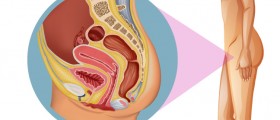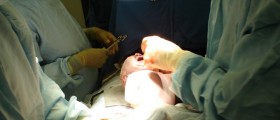
Uterine ablation, also called endometrial ablation is a medical procedure performed to destroy or remove the lining of the uterus (the endometrium). This technique is an alternative for hysterectomy.
Uterine Ablation Overview
Uterine ablation is done to treat abnormal uterine bleeding. It is most commonly performed in an outpatient facility. Uterine ablation is indicated in women who are anemic from excessive blood loss, whose bleeding interferes with daily activities and sexual intercourse and who are not pregnant and do not plan to have children in future. The procedure is also recommended when the uterine bleeding does not respond to other treatment options and for women who do not want to or cannot undergo hysterectomy. Uterine Ablation Procedure
Prior to the procedure, a doctor will order sample of endometrial tissue (biopsy) to rule out presence of cancerous cells. Uterine polyps as well as fibroids beneath the endometrial lining must be excluded too. Young women may be given hormonal therapy to thin the lining of the endometrium.
There are different uterine ablation methods. The uterine lining can be destroyed with electricity, using a resectoscope with a loop or rolling ball electrode, by laser beams, freezing or heat. Uterine ablation using heat is known as thermal ablation and can be done using high-energy radiofrequency, balloon filled with heated saline solution or normal saline.
Uterine ablation is commonly done using a local anesthesia but general or spinal anesthesia can be sometimes used too. The type of anesthesia depends on the method used. Uterine ablation procedure takes up to about 45 minutes.
Preparation of Procedure
Before the procedure, the opening of the cervix is dilated either with medications or specific instruments. The doctor introduces a narrow viewing tube with a camera into the uterine cavity through the cervix and vagina. The camera allows the surgeon to view the uterine cavity on a TV monitor during the procedure.
The uterine cavity is filled with fluid which is then heated or vaporized with the help of a heat generated tool inserted thought the tube. The heat helps to destroy the lining of the uterus. What to Expect After Uterine Ablation?
After the procedure the patient is advised to avoid strenuous activities for at least 24 hours. Sexual intercourse should be also avoided for about two weeks.
The patient may experience side effects of uterine ablation such as cramping for a day or two, nausea, frequent urination and vaginal discharge that may be watery and mixed with blood. All in all, the recovery may take a few days to two weeks.
Uterine ablation has certain risks, which are rare but can be serious. The risks include:
Burns to the surface of the bowel or the uterusAccumulation of fluid in the lungsPulmonary embolismPerforation of the uterusTearing of the opening of the uterus
















Your thoughts on this
Loading...